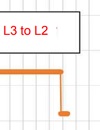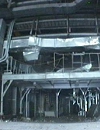NPP Fukushima Daiichi
The weight of the corium sample extracted at the second unit of the Fukushima Daiichi NPP is 0.7 g
TEPCO has started dumping the ninth batch of Fukushima water into the ocean
China and Japan held technical consultations on the issue of draining Fukushima water
 Fukushima - China and Japan hold consultations
Fukushima - China and Japan hold consultations
Japan and China held a consultation last month on the dumping of tritium-contaminated water into the ocean from the site of the Fukushima Daiichi nuclear power plant.
This is stated in an article published in the Japan Times. In accordance with the terminology adopted in Japan, the original article calls the water as treated, not as contaminated with tritium.
At the meeting, as sources close to the topic told reporters, the issue of China ban on imports of marine products from Japan was also discussed.
The consultation was organized online. It is claimed that the parties were unable to make significant progress, as China, despite Japan request, kept the import ban in force.
TEPCO has started draining the second batch of tritium-contaminated water from Fukushima
TEPCO will not be able to start extracting fuel at Fukushima Daiichi-2 in 2022
China and Russia have submitted to the IAEA a list of technical issues on Japanese plans to drain Fukushima contaminated water into the ocean
 Fukushima water - NRA gave the go-ahead
Fukushima water - NRA gave the go-ahead
Japanese Nuclear Regulatory Agency (NRA) has approved TEPCO plan to dump tritium-contaminated water accumulated at the site of the Fukushima Daiichi emergency nuclear power plant into the ocean.
The official approval was preceded by a 30-day public comment period.
The contaminated water is stored at the site in about a thousand tanks. This is water purified after passing through a specialized ALPS system, which is capable of removing most radioactive isotopes, except tritium.
The volume of stored water is gradually increasing, despite all efforts to reduce the rate of its accumulation. Now it is about 1.37 million cubic meters. According to forecasts, the existing tanks will be fully filled in the middle...
 Fuel removal from SFP-3 at Fukushima-1 completed
Fuel removal from SFP-3 at Fukushima-1 completed
The removal of fuel from the Unit 3 spent fuel pool commenced on April 15, 2019 with the objective of completing it during FY2020 in accordance with the Mid- and-Long-term Roadmap.
February 28 at 1:59 PM, at the end of the 84th fuel removal session, the final six fuel assemblies from the spent fuel pool were removed from their transport containers and placed into the fuel rack in the common pool thereby completing this project.
The removal of fuel from the Unit 3 spent fuel pool consisted of a series of preparatory tasks that were completed one by one, such as the removal of rubble from, and decontamination of, the uppermost floors of the reactor building, the construction of a fuel removal cover...
All spent fuel was unloading from SFP-3 at Fukushima Daiichi NPP
560 of 566 fuel assemblies are unloading from SFP-3 at Fukushima Daiichi NPP
553 of 566 fuel assemblies are unloading from SFP-3 at Fukushima Daiichi NPP
 Fukushima Daiichi - Drop in Water Levels
Fukushima Daiichi - Drop in Water Levels
On February 18, as parameters, such as primary containment vessel water levels and temperature, were being monitored, the Unit 1 primary containment vessel experienced a drop in water level.
As a result, other parameters were checked and it was found that some of the temperature gauges in the primary containment vessels for Unit 1 and Unit 3 have been showing decreasing trends since February 15 and February 17, respectively.
Therefore, we have been assessing related parameters since February 18, and today February 19 we determined that water levels in the Unit 1 and Unit 3 primary containment vessels are decreasing.
Furthermore, since no significant fluctuations...
544 of 566 fuel assemblies are unloading from SFP-3 at Fukushima Daiichi NPP
542 of 566 fuel assemblies are unloading from SFP-3 at Fukushima Daiichi NPP
535 of 566 fuel assemblies are unloading from SFP-3 at Fukushima Daiichi NPP
533 of 566 fuel assemblies are unloading from SFP-3 at Fukushima Daiichi NPP
524 of 566 fuel assemblies are unloading from SFP-3 at Fukushima Daiichi NPP
517 of 566 fuel assemblies are unloading from SFP-3 at Fukushima Daiichi NPP
510 of 566 fuel assemblies are unloading from SFP-3 at Fukushima Daiichi NPP
496 of 566 fuel assemblies are unloading from SFP-3 at Fukushima Daiichi NPP
489 of 566 fuel assemblies are unloading from SFP-3 at Fukushima Daiichi NPP
475 of 566 fuel assemblies are unloading from SFP-3 at Fukushima Daiichi NPP
468 of 566 fuel assemblies are unloading from SFP-3 at Fukushima Daiichi NPP
461 of 566 fuel assemblies are unloading from SFP-3 at Fukushima Daiichi NPP
447 of 566 fuel assemblies are unloading from SFP-3 at Fukushima Daiichi NPP
434 of 566 fuel assemblies are unloading from SFP-3 at Fukushima Daiichi NPP
427 of 566 fuel assemblies are unloading from SFP-3 at Fukushima Daiichi NPP
413 of 566 fuel assemblies are unloading from SFP-3 at Fukushima Daiichi NPP
406 of 566 fuel assemblies are unloading from SFP-3 at Fukushima Daiichi NPP
385 of 566 fuel assemblies are unloading from SFP-3 at Fukushima Daiichi NPP
378 of 566 fuel assemblies are unloading from SFP-3 at Fukushima Daiichi NPP
371 of 566 fuel assemblies are unloading from SFP-3 at Fukushima Daiichi NPP
364 of 566 fuel assemblies are unloading from SFP-3 at Fukushima Daiichi NPP
357 of 566 fuel assemblies are unloading from SFP-3 at Fukushima Daiichi NPP
350 of 566 fuel assemblies are unloading from SFP-3 at Fukushima Daiichi NPP
336 of 566 fuel assemblies are unloading from SFP-3 at Fukushima Daiichi NPP
329 of 566 fuel assemblies are unloading from SFP-3 at Fukushima Daiichi NPP
315 of 566 fuel assemblies are unloading from SFP-3 at Fukushima Daiichi NPP
301 of 566 fuel assemblies are unloading from SFP-3 at Fukushima Daiichi NPP
294 of 566 fuel assemblies are unloading from SFP-3 at Fukushima Daiichi NPP
287 of 566 fuel assemblies are unloading from SFP-3 at Fukushima Daiichi NPP
245 of 566 fuel assemblies are unloading from SFP-3 at Fukushima Daiichi NPP
238 of 566 fuel assemblies are unloading from SFP-3 at Fukushima Daiichi NPP
231 of 566 fuel assemblies are unloading from SFP-3 at Fukushima Daiichi NPP
224 of 566 fuel assemblies are unloading from SFP-3 at Fukushima Daiichi NPP
154 fuel assemblies were unloaded from spent fuel pool of third unit of Fukushima Daiichi NPP
ROSATOM Organizations Completed 1st Phase of Project on Fukushima Daiichi NPP Debris Properties Research
Regulators have approved a plan of 24 points for Fukushima Daiichi
TEPCO has unloaded all assemblies from spent fuel pool of Fukushima Daiichi-4
TEPCO nearly completed Fukushima Daiichi-4 spent fuel pool unloading
TEPCO continues to unload spent fuel pool of Fukushima Daiichi-4
TEPCO unloads fresh assemblies from spent fuel pool
Spent assembly removal is completed at Fukushima Daiichi-4
1342 fuel assemblies have been removed from the spent fuel pool of Fukushima Daiichi-4
Fukushima specific activity raised due to two typhoons
Higher Fukushima Radiation Levels Triggered By Typhoons
Fukushima Nuclear Disaster Had No Impact on Atmosphere: Russian Expedition
Radioactivity in Japanian Eastern Waters At Normal Levels: Russian Scientists
Fukushima To Be Hit By Typhoon, Causing Ocean Contamination: Tepco
Russian Scientists Take Water Samples from Near Fukushima Nuclear Plant
Japanese Authorities Narrow Down Fukushima Evacuation Zone
Fukushima Water Treatment System Fails Again
Scientists: Russian Fukushima Fallout Expedition to Help Develop Safer Nuclear Plants
Russian Scientists to Examine Kuril Islands for Fukushima Radioactive Waste
Fukushima Decontamination Process Lagging Behind Set Timeframe: Reports
South Korea Plans to Lift Embargo on Japanese Seafood
TEPCO Announces Test Run of Improved Water Decontamination System at Fukushima
Fukushima Radioactive Waste Still Kept in Temporary Storage
Japanese Newspaper Publisher Apologizes for False Reports on Fukushima, Korean Women
Late Plant Manager Says He Wishes to Beat up Those Who Claim Fukushima Staff Hesitated
Japan Protests UN Not Under Control Report on Fukushima
Japan Considers Building Offshore Power Plant After Fukushima Disaster
IAEA, Japan to Conduct Joint Water Sampling in Fukushima
Fukushima Liquidators to Sue TEPCO for Health Risks Compensation
TEPCO Says Attempt to Curb Accumulation of Radioactive Water at Fukushima Ineffective
Russian Scientists to Develop Nuclear Waste Removal Technology for Fukushima
Fukushima Rice Exports Resume After 2011 Nuclear Meltdown
Scientists Say Clear Plan Needed for Fukushima Decontamination
Fukushima Radiation Causing Long Term Effects
TEPCO Searches Approval to Dump Radioactive Water Into Sea
Fukushima Disaster Victims Reach 21,586
Japan Says Fukushima Decontamination Must Be Area-Specific
Decommissioning Of Fukishima Reactors More Challenging Than Previously Thought - Reports
Clean Coal Power Plant to Bring Desolate Fukushima Back to Life, TEPCO Says
TEPCO Failing to Filter Radioactive Isotopes From Fukushima Waters in Time
Ex-TEPCO Executives to Face Criminal Charges Over Fukushima Disaster
Japan Gives Up Plan to Buy Fukushima Lands for Nuclear Waste Storage Facilities
Fukushima Monkeys Showing Signs of Radiation Exposure - Study
Radioactive Cesium Fallout Could Cause Rice Contamination in Fukushima Prefecture - Report
Another Leak of Radioactive Water Reported at Fukushima NPP in Japan
TEPCO Starts Dumping Fukushima Groundwater Into Pacific Ocean
Japan Temporarily Halts Radioactive Water Cleaning System at Fukushima
Fukushima Operator Finds Source of Radioactive Water Leak
Japan TEPCO to Start Dumping Fukushima Water Into Ocean Next Week
Only 30% Return to Fukushima After Evacuation Order Lifted Ц Survey
Fukushima Employee Demands Compensation For Exposure to Radiation
Radiation Levels in Fukushima Forests Drop 50% Ц Report
Fukushima Disaster Taking Heavy Toll on Families Ц Survey
Activists Accuse Japan of Concealing Data on Nuclear Facilities
Photojournalist Says Fukushima Aftermath Worse Than War Zones
Thousands of Fukushima Cows Culled in Decontamination Program
Hospital Resumes Work in Fukushima Evacuation Area
UK Shoe Brand Uses Fukushima Materials in New Collection
Russian Customs Rejects Radioactive Cars From Japan
Fukushima Radiation Levels Drop, Still Dangerous Ц Report
Fukushima Operator Begins Pumping out Radioactive Groundwater
Japanese Radioactive Soil Seized in Kiev
Russia Reiterates Offer to Help Clean Up Fukushima Radiation
Water Leaks May Become New Japan Nuclear Disaster
Radioactive Water Leaks at Japanese Nuclear Plant
Japan Nuke Plant Leaks 300 Tons of Radioactive Water
Fukushima Children Come to Russian Far East for Holiday
Fukushima Leaks 300 Tons of Radioactive Water Daily Ц Report
Radiation-Contaminated Japanese Cars Still Concern Ц Russian Customs
Japan Reports Soaring Fukushima Groundwater Radiation
Japan Reports New Radioactive Leak at Fukushima
Dead Rats Shut Down Japan Nuclear Plant Cooling System
New Radioactive Water Leak Found at Japan Fukushima Plant
Fresh Radioactive Water Leak Reported at JapanТs Fukushima Nuke Plant
120 Tons of Radioactive Water Leak from Fukushima
Fukushima Radiation in Fish 100 times Above Norm
Japan Premier in Fukushima to Inspect Disaster-Hit Nuke Plant
Fukushima Radiation Down 20% Ц TV
Japan Panel: Fukushima Crisis Man-Made
Cesium Found in Fukushima Children Urine
Owner Told to Get Rid of Radioactive Car
Fresh Radioactive Water Leakage Reported at Fukushima Nuke Plant
Japan sets up four expert groups for another Fukushima probe
Inquiry blames Fukushima operator and authorities for nuclear disaster
Fukushima soil decontamination zone may be larger than expected
Fukushima farmers urged to stop meat deliveries over radiation fears
TEPCO halts Fukushima water decontamination system after chemical leak
Japan says Fukushima cleanup will take decades
Radioactive strontium detected on seabed near Fukushima
Some 28,000 Japanese from Fukushima disaster zone to begin health checks
Radiation levels in Russia Far East remain within norm
Iodine levels in two Japanese nuke plant workers 10 times above norm
Japan TEPCO restores cooling system at Fukushima No. 5 reactor
Radiation levels in Russia Far East remain within norm
 Fukushima brings together Tokyo, Seoul and Beijing
Fukushima brings together Tokyo, Seoul and Beijing
Some commentators like to use arithmetic to compare various international organizations. If we add up the annual GDP of China (the world's second largest economy), Japan (the third largest economy) and South Korea (whose GDP is nothing to sneeze at) and compare the sum to the GDPs of the G8, which also includes Japan...nothing will happen. This is a senseless exercise because regional and international organizations are not created to flex muscles - economic or otherwise.
The GA is merely a top-level forum for discussing and regulating the ongoing formation of a common economic space in this part of the world. ASEAN performs a similar function in Southeast Asia. The purpose of these organizations is completely clear. The G8, meanwhile, appears no longer to serve a purpose.
But the GA is a special case. There are few organizations in the world where the members have such long-standing animosity toward one another. For example, while Japanese Prime Minister Naoto Kan, his Chinese counterpart Wen Jiabao and South Korean President Lee Myung-bak have agreed on new plans for cooperation.
Japan sets up panel to probe Fukushima crisis
TEPCO confirms fuel meltdown in three Fukushima reactors
Radioactive debris hampers efforts to cool reactor at Japan quake-hit nuke plant
Giant barge arrives at Fukushima plant to store radioactive water
Head of Japan crippled Fukushima nuke plant operator resigns
Japan starts evacuation outside 20 km radius of troubled Fukushima nuke plant
Rescuer at Japan quake-hit nuclear plant dies at 60
TEPCO reports nuclear fuel meltdown at Fukushima No. 1
Japanese Imperial couple to visit Fukushima province
TEPCO detects dangerous radiation level at Fukushima No. 1 reactor
Engineers continue monitoring radiation at Fukushima
Radiation levels in Russia Far East remain within norm
Japan to continue use of nuclear power despite Fukushima nuke crisis - govt
Radiation levels drop in Japan troubled reactor
No rise in radiation levels in Russia Far East
Japanese nuclear specialists enter Fukushima reactor building
Japan lifts restrictions on milk supplies from areas near quake-hit nuke plant
Radiation levels remain within norm in Russia Far East
Russian Far East emergencies service reports normal radiation levels
TEPCO to complete radioactive debris cleanup work at Fukushima plant by July
TEPCO to be banned from operations at Fukushima 1 plant - governor
Japanese authorities declare 20-km no-go zone around Fukushima
Amount of radioactive water Fukushima Unit Two reactor drops
TEPCO starts pumping radioactive water out of damaged unit
TEPCO plans to bring damaged nuke reactors to normal in 6-9 months
Russia reports radiation normal despite Japan nuclear disaster
Russian experts to study Sea of Japan nuclear contamination
TEPCO begins dumping radiation-absorbent bags into sea
Japan approves $600-million compensation plan for Fukushima evacuees
Fukushima milk back in Japanese stores
Japan needs to build sarcophagus over Fukushima reactor - experts
Fukushima nuke accident on par with Chernobyl and could get worse
Strong quake forces crippled nuke plant to evacuate employees
Japanese govt. raises Fukushima accident level to worst
Japan considers expanding evacuation area
Radiation levels remain within norm in Russia Far East
Japanese economy minister to visit crippled Fukushima nuclear plant
Russia urges Japan to stop radioactive dumping into Pacific
Japan to inject nitrogen into troubled reactor to prevent explosion
Outflow of highly radioactive water from Fukushima nuke plant stops
Japan asks Russia for help disposing radioactive water
Radiation levels in Russia Sakhalin Region remain within norm
Radioactive water continues leaking from Japan nuclear plant - TV
Radioactive water leaks from Japan nuclear plant
Japan PM visits nuclear exclusion zone
Russia Far East monitors radiation levels every 2 hours
Russia repeats warning against citizens visiting Japan
No plans to expand Fukushima exclusion zone - authorities
No options but to close Fukushima nuke plant - Japanese premier
Radioactive iodine level near Fukushima 4,300 times above norm
Japanese cabinet secretary suggests scrapping Fukushima plant
Japan authorities warn people against returning to radiation zone
Japan forces tougher safety on nuclear facilities
Japan mulls covering Fukushima reactors to prevent fallout
Radioactive iodine in sea near Fukushima 3,000 times above norm
Fukushima radioactive water not confirmed - agency
Radiation levels still within norm in Russia Far East
Melted fuel rods cause radiation spike at Japan nuclear plant - govt.
Radioactivity in water at Fukushima No. 2 reactor 10 mln times above norm
Radiation level normal in Russia Far East despite Japan disaster - ministry
Power functions restored at control room of Fukushima 2nd reactor
Radiation levels no danger to marine life - Japanese spokesman
Radioactive iodine levels soaring in sea near Fukushima plant
Experts compare Fukushima and Chernobyl disasters
Fukushima area to be habitable in five years - expert
Radiation levels around Fukushima to fall within month - expert
Japanese living near Fukushima plant advised to move
Japan should restore troubled Fukushima plant - Russian expert
Fukushima radiation detected in Germany
Two Fukushima workers hospitalized with radiation exposure
Russia bans food imports from Japan following nuclear incidents
Japan reports radioactive iodine in sea at 147 times safe level
Electricity supply works resume at crippled Fukushima 1 NPP
Global radiation spread from Japan plant harmless

